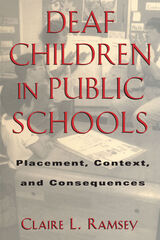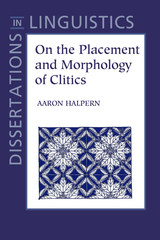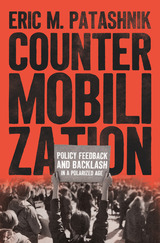3 books about Placement

Deaf Children in Public Schools
Placement, Context, and Consequences
Claire L. Ramsey
Gallaudet University Press, 1997
As the practice of mainstreaming deaf and hard of hearing children into general classrooms continues to proliferate, the performances of these students becomes critical. Deaf Children in Public Schools assesses the progress of three second-grade deaf students to demonstrate the importance of placement, context, and language in their development.
Ramsey points out that these deaf children were placed in two different environments, with the general population of hearing students, and separately with other deaf and hard of hearing children. Her incisive study reveals that although both settings were ostensibly educational, inclusion in the general population was done to comply with the law, not to establish specific goals for the deaf children. In contrast, self-contained classes for deaf and hard of hearing children were designed especially to concentrate upon their particular learning needs. Deaf Children in Public Schools also demonstrates that the key educational element of language development cannot be achieved in a social vacuum, which deaf children face in the real isolation of the mainstream classroom.
Based upon these insights, Deaf Children in Public Schools follows the deaf students in school to consider three questions regarding the merit of language study without social interaction or cultural access, the meaning of context in relation to their educational success, and the benefits of the perception of the setting as the context rather than as a place. The intricate answers found in this cohesive book offer educators, scholars, and parents a remarkable stage for assessing and enhancing the educational context for the deaf children within their purview.
Ramsey points out that these deaf children were placed in two different environments, with the general population of hearing students, and separately with other deaf and hard of hearing children. Her incisive study reveals that although both settings were ostensibly educational, inclusion in the general population was done to comply with the law, not to establish specific goals for the deaf children. In contrast, self-contained classes for deaf and hard of hearing children were designed especially to concentrate upon their particular learning needs. Deaf Children in Public Schools also demonstrates that the key educational element of language development cannot be achieved in a social vacuum, which deaf children face in the real isolation of the mainstream classroom.
Based upon these insights, Deaf Children in Public Schools follows the deaf students in school to consider three questions regarding the merit of language study without social interaction or cultural access, the meaning of context in relation to their educational success, and the benefits of the perception of the setting as the context rather than as a place. The intricate answers found in this cohesive book offer educators, scholars, and parents a remarkable stage for assessing and enhancing the educational context for the deaf children within their purview.
[more]

Decisions, Agency, and Advising
Key Issues in the Placement of Multilingual Writers into First-Year Composition Courses
Tanita Saenkhum
Utah State University Press, 2016
Decisions, Agency, and Advising considers the role of students’ own agency in the placement of multilingual writers—including international students and US residents or citizens who are nonnative users of English—in US college composition programs. Grounded in qualitative research and concerned equally with theory and practice, the book explores how multilingual students exercise agency in their placement decisions and how student agency can inform the overall programmatic placement of multilingual students into first-year composition courses.
Tanita Saenkhum follows eleven multilingual students who made their decisions about placement into first-year composition courses during one academic year at a large public university. She identifies the need for the process of making placement decisions to be understood more clearly, describes how to use that knowledge to improve placement practices for these students—particularly in advising—and offers hands-on recommendations for writing programs.
Decisions, Agency, and Advising is a significant contribution to the field and particularly valuable to writing program administrators, academic advisors, writing teachers, researchers investigating second language writing and writing program administration, composition and second language writing scholars, and graduate students.
Tanita Saenkhum follows eleven multilingual students who made their decisions about placement into first-year composition courses during one academic year at a large public university. She identifies the need for the process of making placement decisions to be understood more clearly, describes how to use that knowledge to improve placement practices for these students—particularly in advising—and offers hands-on recommendations for writing programs.
Decisions, Agency, and Advising is a significant contribution to the field and particularly valuable to writing program administrators, academic advisors, writing teachers, researchers investigating second language writing and writing program administration, composition and second language writing scholars, and graduate students.
[more]

On the Placement and Morphology of Clitics
Aaron Halpern
CSLI, 1995
Using data from a variety of languages, this book investigates the place of clitics in the theory of language structure, and their implications for the relationships between syntax, morphology and phonology. It is argued that the least powerful theory of language requires us to recognise at least two classes of clitics, one with the syntax of independent phrases and the other with the syntax of inflectional affixes. It is also argued that prosodic conditions may influence the surface position of clitics beyond what may be accomplished by filtering potential syntactic structures. Finally, the relationship between syntactic, morphological, and phonological constituents within wordlike elements is explored.
[more]
READERS
Browse our collection.
PUBLISHERS
See BiblioVault's publisher services.
STUDENT SERVICES
Files for college accessibility offices.
UChicago Accessibility Resources
home | accessibility | search | about | contact us
BiblioVault ® 2001 - 2024
The University of Chicago Press









